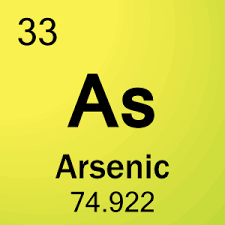Improving Arsenic detection and keeping it out of drinking water
Arsenic, a naturally occurring element, is one of the many drinking water contaminants actively monitored by drinking water systems because it can result in adverse health conditions, including an increased risk for a range of cancers. U.S. EPA and the U.S. Bureau of Reclamation (USBR) are joining forces to launch the Arsenic Sensor Prize Competition for the development of new technology to detect arsenic in water. If you are interested in participating you can read more here:
https://blog.epa.gov/blog/2016/09/were-sensing-a-change-in-water-monitoring-introducing-the-arsenic-sensor-prize-competition/
The use of arsenic as a poison is widely documented. As a result, many people are alarmed when they hear that their drinking water, either from a public or private water system, may contain any amount of arsenic. Exposure to arsenic in drinking water at the level the U.S. Environmental Protection Agency (EPA) currently deems as safe in the United States (10 parts per billion) still may induce adverse health outcomes. The U.S. EPA recently lowered the Maximum Contaminant Level (MCL) for arsenic to 10 µ/L in public water supplies—a regulated level that is considered “safe” for a lifetime of exposure—yet concentrations of 100 µ/L and higher are commonly found in private, unregulated well water in regions where arsenic is geologically abundant, including upper New England (Massachusetts, New Hampshire, Maine), Florida, and large parts of the Upper Midwest, the Southwest, and the Rocky Mountains.

Arsenic in drinking water.
Measuring and testing for arsenic require expensive instruments and lab work, as well as time. However, with new and emerging technologies, a more efficient arsenic monitoring technology could help to improve the monitoring system, reduce costs, and better protect human health and the environment. Typically, samples are sent to a laboratory for analysis, with results available days to weeks later. New technology could accelerate this process by allowing for immediate detection of arsenic in water. This could reduce monitoring costs and help water utilities more effectively control treatment to remove arsenic from the drinking water supply.
The Arsenic Sensor Prize Competition aims to improve the existing process with upcoming and emerging technology. The competition is not exclusively restricted to sensor developers but seeks applicants from all fields, including information technology. For example, besides sensor technologies, a new data collection and transmission technologies such as Internet of Things (IoT) can also accelerate water quality characterization process or better data management, visualization, and reporting via cloud-based SaaS technologies. Applicant criteria include anyone with ideas for how to rapidly, accurately, and cost-effectively measure arsenic in water.
Locus Technologies is a software company that specializes in providing a SaaS-based solution for water quality management. Arsenic is one of a key and prolific contaminants in our vast water quality databases. We have a keen interest in supporting this excellent and timely competition to help find a way to automate detection and data collection of arsenic and other contaminants in real time. To help shed some light on the importance of arsenic in drinking water, we performed a quick check on a total number of arsenic records, hits, and locations across all customers in Locus SaaS EIM (Yes multi-tenant SaaS as otherwise, this statistic would be impossible to gather). This is what we found:
Total number of analytical records: >520,000,000
Number of Arsenic Records: 248,850
Number of Arsenic hits (above action limit MCL of 10 µ/L): 112,597
Number of Arsenic locations: 19,304
If you have ideas and are interested in helping protect our nation’s drinking water, Locus encourages you to participate. We will have a special prize for the winner.



Leave a Reply
Want to join the discussion?Feel free to contribute!